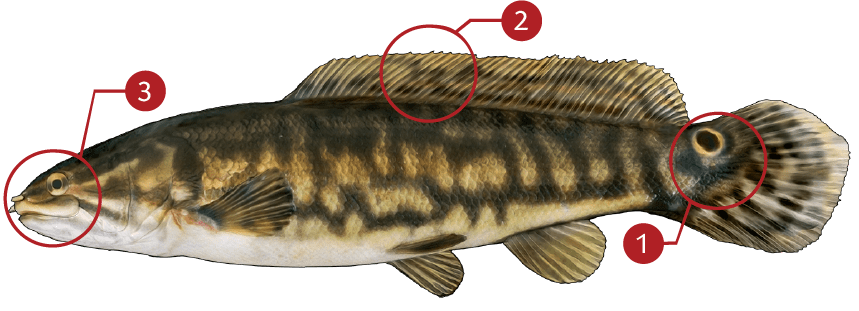BOWFIN
How to identify a Bowfin
The bowfin is easily recognized by its flattened head; long, stout body; large mouth full of small sharp teeth; long dorsal fin that extends along most of the back; and rounded tail. In the males there is a spot surrounded by an orange-yellow halo on the upper area of the caudal peduncle. In the females the spot either is not ocellated or is lacking entirely.It is able to gulp air from the surface directly into the air bladder, which is connected to the throat and can be used as a lung. It can also withstand high temperatures, for which reasons it survives in waters unsuited to most other fishes.
Where to catch Bowfin
Inhabits the eastern U.S.A. from the Mississippi River basin eastward to the St. Lawrence River in the north, and southward from Minnesota to the Gulf Coast; from eastern Texas to and including all of Florida.
IDENTIFICATION

| |
Males have a spot surrounded by an orange-yellow halo on the upper area of the caudal peduncle |
| |
Long dorsal fin that extends along most of the back |
| |
Flattened head; long, stout body; large mouth full of small sharp teeth |
TARGET AREAS
|
|
Acknowledgements: We thank TAKEMEFISHING.org (www.takemefishing.org), Wisconsin Department of Natural Resources, Indiana Department of Natural Resources for their contributions to these FISH FACTS.

